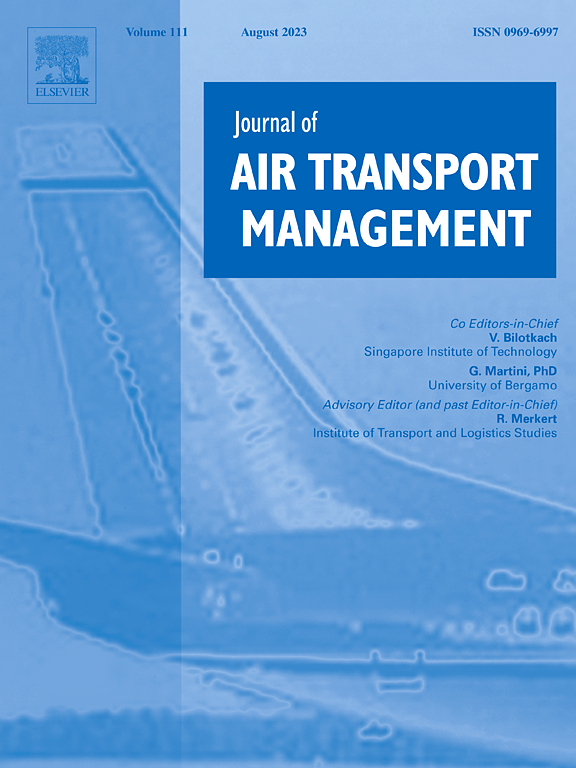Enhanced self-separation decision making for autonomous flight operations in air corridors
IF 3.9
2区 工程技术
Q2 TRANSPORTATION
引用次数: 0
Abstract
This paper discusses the emergency self-separation decision-making for autonomous aircraft operating in a high-density air corridor. Air corridors are longish airspace volumes, where multiple self-separated aircraft fly sequentially without instructions from the Air Traffic Controllers (ATCOs). However, due to high traffic volume and limited inter-distance between aircraft, the trailing aircraft becomes more conflict sensitive to environment changes (for instance, a sudden deceleration in the preceding aircraft). Therefore, to realize high traffic throughput while maintaining operation safety, an enhanced multi-attribute decision making (MADM) framework is presented in this paper to address the need for appropriate maneuver determination in a close proximity situation. Specifically, we decompose the MADM scheme into two main steps. In the first step, four candidate maneuver options are generated under different self-separation methodologies. Each candidate option is then evaluated via multiple attributes, which represent various performance objectives of the aircraft. In the second step, the Technique for Order of Preference by Similarity to Ideal Solution (TOPSIS) is used to determine the optimal maneuver that realizes an adequate tradeoff among the competing objectives. By simulating aircraft maneuvers in diverse emergency scenarios and with various corridor traffic settings, experimental results have successfully demonstrated the effectiveness of the proposed MADM-based self-separation mechanism.
加强空中走廊自主飞行作业的自分离决策
本文讨论了高密度空中走廊中自主飞行器的应急自分离决策问题。空中走廊是一种较长的空域,多架飞机在没有空中交通管制员(atco)指令的情况下连续飞行。然而,由于高交通量和飞机之间的距离有限,尾随的飞机对环境变化变得更加冲突敏感(例如,前一架飞机突然减速)。因此,为了在保证运行安全的同时实现高流量吞吐量,本文提出了一种增强型多属性决策(MADM)框架,以解决近距离情况下适当机动决策的需求。具体来说,我们将MADM方案分解为两个主要步骤。在第一步中,在不同的自分离方法下生成了四个候选机动选项。然后通过多个属性对每个候选选项进行评估,这些属性代表了飞机的各种性能目标。第二步,利用与理想解相似的偏好排序技术(TOPSIS)确定在竞争目标之间实现充分权衡的最优策略。通过模拟不同应急场景和不同通道交通设置下的飞机机动,实验结果成功验证了基于madm的自分离机制的有效性。
本文章由计算机程序翻译,如有差异,请以英文原文为准。
求助全文
约1分钟内获得全文
求助全文
来源期刊

Journal of Air Transport Management
TRANSPORTATION-
CiteScore
12.40
自引率
11.70%
发文量
97
期刊介绍:
The Journal of Air Transport Management (JATM) sets out to address, through high quality research articles and authoritative commentary, the major economic, management and policy issues facing the air transport industry today. It offers practitioners and academics an international and dynamic forum for analysis and discussion of these issues, linking research and practice and stimulating interaction between the two. The refereed papers in the journal cover all the major sectors of the industry (airlines, airports, air traffic management) as well as related areas such as tourism management and logistics. Papers are blind reviewed, normally by two referees, chosen for their specialist knowledge. The journal provides independent, original and rigorous analysis in the areas of: • Policy, regulation and law • Strategy • Operations • Marketing • Economics and finance • Sustainability
 求助内容:
求助内容: 应助结果提醒方式:
应助结果提醒方式:


